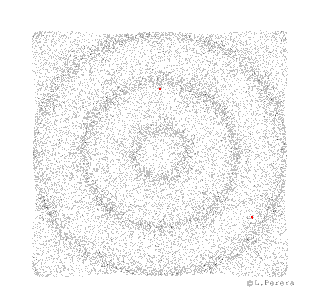
Waves are simply a way that energy is transferred from one place to another.
Whether they are mechanical waves such as waves in the ocean, a wave in a spring and sound waves, or electromagnetic waves, such as radio waves for x-rays, they all share similar features and properties. In the series of lessons, we discuss their features and importantly what happens when waves interact.
Start by watching this video which gives a broad overview of the study of waves and allows you to see how the various concepts are into related. It may also be useful to watch this video as a review exercise after you have studied all the key components involving wave physics.
Whether they are mechanical waves such as waves in the ocean, a wave in a spring and sound waves, or electromagnetic waves, such as radio waves for x-rays, they all share similar features and properties. In the series of lessons, we discuss their features and importantly what happens when waves interact.
Start by watching this video which gives a broad overview of the study of waves and allows you to see how the various concepts are into related. It may also be useful to watch this video as a review exercise after you have studied all the key components involving wave physics.
1. Waves Explained
transverse
longitudinal
interactives
going deeper
sample problem
problems
transverse
|
|
One of my first videos for my channel. I discuss the features of a transverse wave |
|
|
An updated version of the above video
|
longitudinal
|
|
See a demonstration and explanation of longitudinal waves using a slinkComing soon. Also demonstrated is how sound requires a medium
|
interactives
Use the same interactive I used to explore the nature of transverse waves from pHET
Comparing transverse and longitudinal waves. By Tom Walsh
going deeper
Some waves are more complex and cannot be described as either transverse or longitudinal waves. A good example is the surface wave. In the case below, the wave appears as a transverse wave, but unlike a transverse wave, the particles moved periodically in circles, the size of which is dependent on the depth to the surface.
sample problem
problems
- A wave in the ocean has a wavelength of 1.5 m and a period of 0.5 seconds. What is the wave speed?
- The speed of sound is 340 m/s. If a piano places middle C, 256 Hz, what is its corresponding wavelength?
- A wave in a pool is seen to travel at 1 m/s. If it hits the side at a rate of 1.5 per second, what is the wavelength?
- Radio station 103.1 has a frequency of 103.1 MHz, hence its number. What is the wavelength of the wave, given that its speed is 300,000,000 m/s?
- Sound waves travel in air at about 330 m/s. If the human ear is sensitive to frequencies from about 16 Hz to16 kHz, to what range of wavelengths does this correspond? (HINT: work out λ for one frequency, then do the other)
- VHF television channels transmit at frequencies of the order of 100 MHz.
- What is the corresponding wavelength? (v = 300,000,000 m/s)
1) 3m/s 2) 1.33m 3) 0.67m 4) 2.91m 5) 0.0207- 20.7 m 6) 3m
3. Superposition and Interference explained
video
worked solution
Desmos
resources
video
|
|
Looks at what superposition is and how it relates to interference from a 1D perspective |
|
|
Superposition , or the adding of waves, can be demonstrated and explained by using Desmos a powerful online graphing calculator. This video explains the principles on how to use Desmos as well as the basics of understanding the wave equation. Using Desmos you can show superposition in real time, ie as a function of time (See the DESMOS tab to play with it yourself)
|
worked solution
Desmos
Use this Desmos activity that shows wave addition
resources
4. Interference in 2D
video
worked solution
Interactives
video
|
|
Look at two dimensional intereferene, without the mathematics involved
(See young experiment and diffraction under Wave Bahaviours if you want a mathematical approach) |
worked solution
Interactives
This pHET interactive Lab allows you to explore interference
From the same author, this looks at interferences from a 3D perspective.
5. Inverse Square Law Explained
video
worked solution
worksheets
video
|
|
A fundamental principle of waves is that although the energy emitted by a luminous object is the same, its intensity is determined by the distance. |
worked solution
worksheets
6. Modulation explained
video
worked solution
Interactive
video
|
|
How is information transmitted via an electromagnetic wave. The process is called modulation and in this video I demonstrate two familiar types - amplitude modulation (AM) and frequency modulation (FM) |
worked solution
Interactive
This page from Academo has a great simulation of modulation

